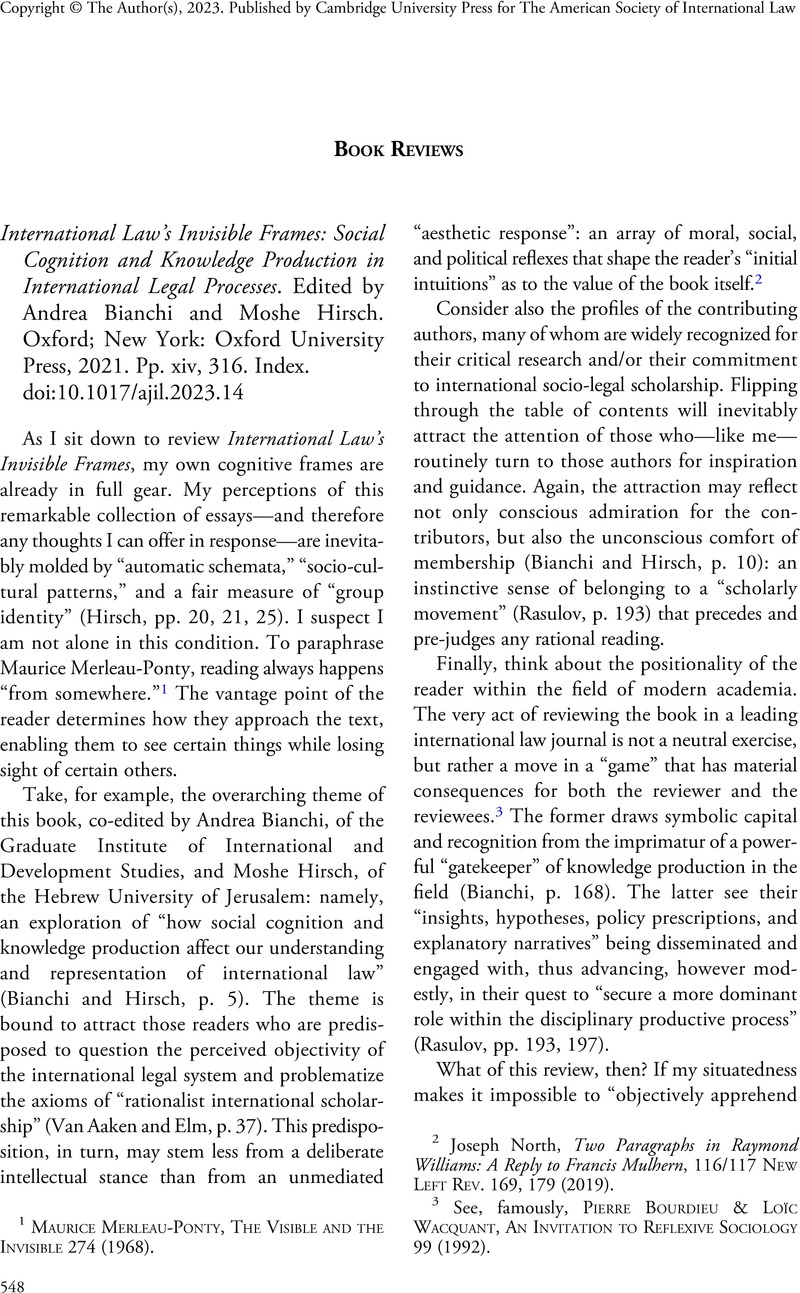No CrossRef data available.
Published online by Cambridge University Press: 27 July 2023

1 Maurice Merleau-Ponty, The Visible and the Invisible 274 (1968).
2 North, Joseph, Two Paragraphs in Raymond Williams: A Reply to Francis Mulhern, 116/117 New Left Rev. 169, 179 (2019)Google Scholar.
3 See, famously, Pierre Bourdieu & Loïc Wacquant, An Invitation to Reflexive Sociology 99 (1992).
4 Frank Conroy, Dogs Bark, But the Caravan Rolls On: Observations Then and Now 103 (2002).
5 See, e.g., Daniel Kahneman, Thinking, Fast and Slow (2011).
6 In this sense, see also Tommaso Soave, The Everyday Makers of International Law: From Great Halls to Back Rooms (2022).